Elegir la ultrafiltración adecuada (UF) La membrana implica considerar varios factores clave para garantizar que cumpla con los requisitos específicos de su aplicación.. A continuación se presenta un enfoque estructurado para guiar su selección.:
1.Identifique los requisitos de su aplicación
– Características del agua de alimentación: Comprenda el tipo de agua que necesita tratar (P.EJ., agua municipal, aguas superficiales, aguas residuales industriales) y sus parámetros de calidad (P.EJ., turbiedad, contenido orgánico, dureza).
– Calidad del permeado: Definir la calidad deseada del agua filtrada. (P.EJ., eliminación de partículas, eliminación de patógenos, reducción de sólidos disueltos).
2.Material de membrana
– Tipo de polímero: Las membranas UF suelen estar hechas de materiales como polisulfona., politersulfona, fluoruro de polivinilideno (PVDF), u otros. Elija según la compatibilidad con la química del agua de alimentación y las características de rendimiento deseadas.
3. Tamaño de poro
– Las membranas UF tienen tamaños de poros definidos que generalmente varían desde 1 a 100 nanómetros.
– Seleccione un tamaño de poro apropiado para el tamaño de los contaminantes que necesita eliminar. Por ejemplo, si eliminar bacterias y algunos virus es crucial, Elija un tamaño de poro adecuado para dichos contaminantes..
4.Condiciones de funcionamiento
– Temperatura y pH: Asegúrese de que la membrana pueda soportar la temperatura y el rango de pH del agua de alimentación..
– Presión: Considere la presión de operación requerida para una filtración eficiente. Presiones más altas pueden mejorar las tasas de flujo pero también aumentar los costos de energía.
5. Consideraciones de rendimiento
– Flujo: Esto se refiere a la velocidad del flujo de agua a través de la membrana.. Un mayor flujo puede conducir a una mayor productividad, pero puede requerir más energía..
– Eficiencia de rechazo: Evaluar la capacidad de la membrana para rechazar partículas y contaminantes de varios tamaños.. Los fabricantes proporcionan datos sobre las tasas de rechazo de diferentes sustancias.
6. Configuración del módulo
– Determine el diseño del módulo apropiado según el diseño de su sistema., disponibilidad de espacio, y requisitos de flujo (P.EJ., herida en espiral, fibra hueca).
7. Reputación y soporte del fabricante
– Elija un fabricante acreditado conocido por producir membranas de alta calidad y brindar soporte técnico y servicio posventa confiables..
8. Consideraciones de costos
– Tenga en cuenta el coste inicial del módulo de membrana, así como los costos operativos continuos, como el consumo de energía., mantenimiento, y frecuencia de reemplazo.
9. Requisitos reglamentarios y de cumplimiento
– Asegúrese de que la membrana cumpla con los estándares y requisitos reglamentarios pertinentes aplicables a su industria o región..
10. Pruebas y estudios piloto
– Realizar estudios piloto, si es posible, para evaluar el rendimiento de la membrana en condiciones operativas reales y validar su idoneidad antes de la implementación a gran escala..
Aplicación de ejemplo:
– Tratamiento de agua potable: Seleccione una membrana UF con un tamaño de poro lo suficientemente pequeño como para eliminar las bacterias., protozoos, y algunos virus, al mismo tiempo que se consideran altos índices de flujo y características de baja contaminación adecuadas para el tratamiento de agua municipal.
Evaluando sistemáticamente estos factores, Puede elegir una membrana de ultrafiltración que no solo satisfaga sus necesidades actuales sino que también proporcione un rendimiento confiable y rentabilidad durante su vida operativa..

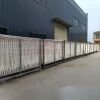 Membrana MBR
Membrana MBR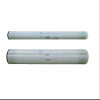 Membrana de ósmosis inversa
Membrana de ósmosis inversa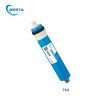 Membrana RO residencial
Membrana RO residencial Membrana UF
Membrana UF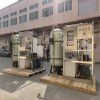 Planta de tratamiento de agua
Planta de tratamiento de agua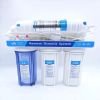 Máquina residencial RO
Máquina residencial RO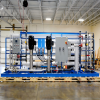 Sistema RO salobre
Sistema RO salobre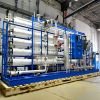 Sistema de agua de mar/planta SW ro
Sistema de agua de mar/planta SW ro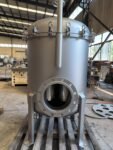 Filtro de bolsa
Filtro de bolsa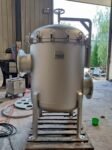 Filtro de cartucho
Filtro de cartucho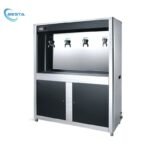 Sistema de filtración de agua comercial
Sistema de filtración de agua comercial Sistema de limpieza de membrana(Titubear)
Sistema de limpieza de membrana(Titubear)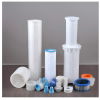 Accesorios de consumo
Accesorios de consumo
